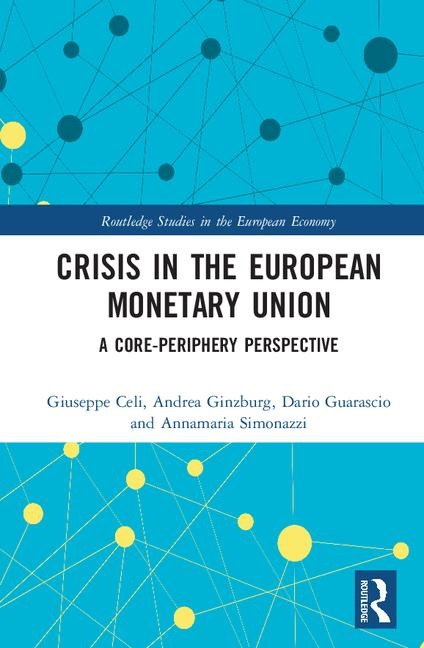Table of contents
Introduction, Part 1: A medium term perspective, 1. The current Euro crisis: a faulty institutional construction, 1.
Introduction, 2. The Werner Report and the idea of Europe, 3. The Snake
and the EMS, 4. The bumpy road to the EMU, 5. The EMU’s institutional
flaws, 6. In the crisis: bail-outs, politics, reforms, 7. Conclusions, 2. The European core-periphery divergent development paths before the crisis: 1999–2008, 1.
Introduction, 2. Germany: from Europe's sick man to export superstar,
3. Wage moderation, 4. Housing: a ‘non-tradable’ sector?, 5. The
construction of the Central European Manufacturing Core, 6.
Conclusions, 3. France: the waning of a core country, 1.
Introduction, 2. From dirigisme to statist liberalism, 3. The waning of
a key sector: the automotive industry, 4. Conclusions, 4. The Eurozone’s double-dip recession: interpretations and policies, 1.
Introduction, 2. A standard balance of payments crisis?, 3. The Target2
debate: a stealth bail-out?, 4. The unfolding of the crisis and the
role of austerity, 5. The structural impact of the crisis, 6.
Conclusions, 5. Inequality, poverty and imports: core, periphery and beyond, 1.
Introduction, 2. Rich Germany, poor Germans, 3. Poor Southern Europe,
poor Southern Europeans, 4. South of South: the case of the Italian
Mezzogiorno, 5. Conclusions, 6. The network of European trade between core and periphery, 1.
Introduction, 2. The European trade networks, 3. The structure of
trade, 4. The evolution of the automotive industry in Europe, 5.
Conclusions. Part II: European de-industrialization processes in a long-term perspective, 7. The weakening of the European growth engine, 1.
Introduction, 2. The fading of the golden age, 3. Heterodox
explanations of the fall in investment: industry and finance, 4.
Orthodox explanations of the fall in investment: secular stagnation, 5.
Financialization and Europeanization6. Conclusions, 8. The interruption of industrialization in Southern Europe: a centre-periphery perspective, 1.
Introduction, 2. The embeddedness of centre-periphery relations, 3. The
global crisis of the mid-1970s in Southern Europe: peripheral
tertiarization and impoverishment of the productive structures, 4. The
European integration of a latecomer country: Italy, 5. The
late-latecomers’ European integration, 6. Democratic transition and
restructuring without re-industrialization, 1975–1985, 7. The
financialization of the European periphery, 8. The German
internationalization strategy: 'widen the market and narrow the
competition', 9. Conclusions, 9. A policy divide: industrial policies in the ‘core’ and ‘peripheral’ countries, 1.
Introduction, 2. The vicissitudes of a concept, 3. European industrial
policy, 4. The Investment Plan for Europe (Juncker Plan), 5. Industry
4.0: a Europe-wide opportunity or a new factor of divergence?, 6.
Conclusions, 10. Conclusions, 1. Institutional flaws
and policy mistakes, 2 Structural differences, 3 Partial, cautious
reforms, 4 Institutional reforms, 5 A German Europe, 6 A European
Germany, 7 A longer-term perspective, 8 Income distribution and the
European social model for long-term sustainability, 9 Towards a shared
alternative programme
